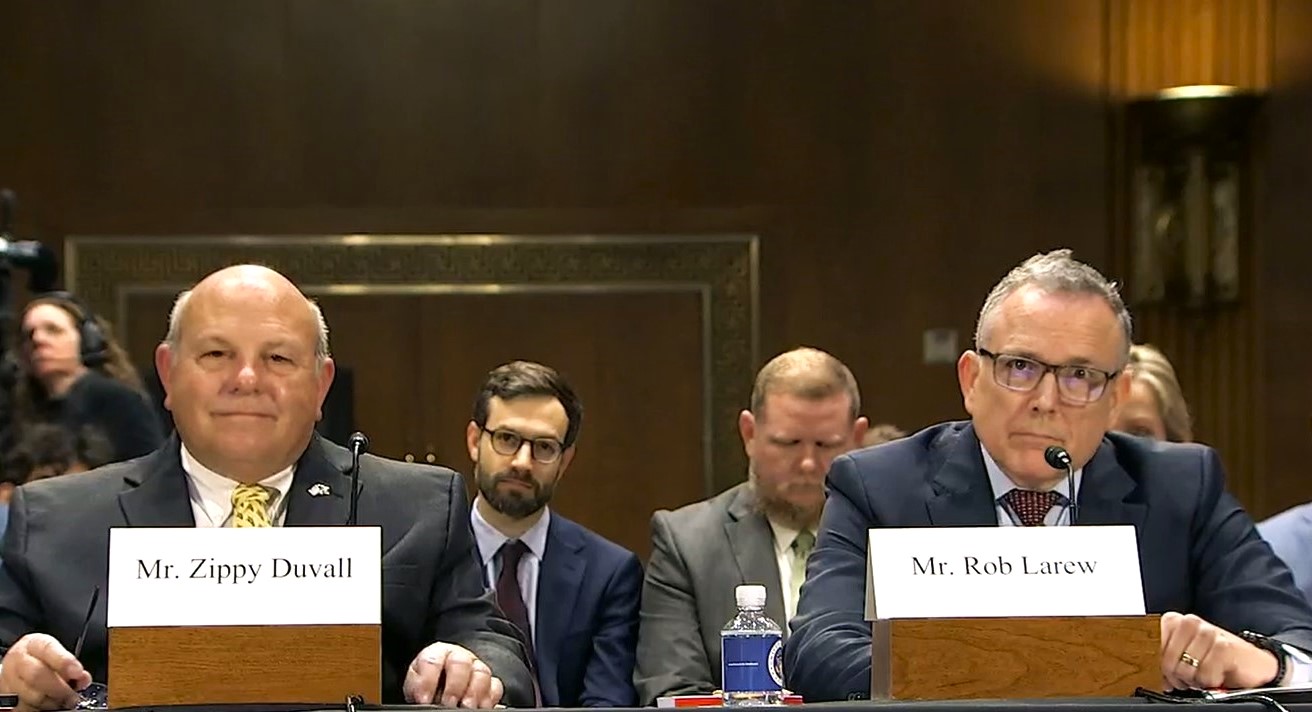VALLEY SPRINGS, S.D. — Ranchers urged Republican U.S. Senators John Thune of South Dakota and John Boozman of Arkansas to consider grasslands and cattle – not just crop support – as they finalize federal legislation that will govern many agricultural and food programs for years to come.
The feedback came as the senators fielded questions from various agriculture and conservation groups during a Friday listening session at a Valley Springs-area farm.
The federal farm bill is officially known as the Agriculture Improvement Act. The bill covers everything from farm credit and crop insurance to nutritional programs and conservation.
The most recent version was enacted in 2018, and various subsidies and programs have been outpaced by inflation. The bill was set to expire but has been extended through Sep. 30 as Congress works through disagreements over the legislation.
The forum attracted commodity groups in the corn, soybean, wheat, dairy, pork, poultry and sunflower sectors, all of whom want stronger crop insurance.
“It’s time to get it passed, this year,” said Scott VanderWal, president of South Dakota Farm Bureau. “We didn’t really want to be in a presidential election year when we had to do this, but that’s where we’re at. We have to deal with it.”
Sen. Boozman, the top Republican on the Senate Ag Committee, acknowledged the importance of conservation but said crop insurance should be the focus. He said every acre taken out of production and conserved is less income for small towns.
There needs to be “more farm in the farm bill,” Boozman said, a sentiment echoed by Thune.
The session’s rhetoric shifted when South Dakota Cattlemen’s Association President Warren Symens stood up.
“I agree that putting ‘farm’ back in the farm bill is crucial,” he said. “But our members are looking to see a little more ‘ranch’ in the farm bill, as well.”
Symens spoke of ranchers’ role in grassland conservation and stressed the importance of plentiful grazing acres.
“Leaving them idle and not allowing grazing kills small towns” dependent on the cattle industry, he said.
Symens lobbied for the inclusion of beef in farm bill nutrition programs and for electronic cattle traceability funding to manage disease outbreaks better.
With disease outbreaks, he said, “it’s not a matter of if, it’s when.”
Currently, ranching receives less federal support compared to the support provided to crops.
From 1995 to 2020, South Dakota farmers received $6.7 billion in federal payments for corn, $3.1 billion for soybeans, $2.4 billion for wheat (much of it as a result of bad trade practices and laws under the Trump administration) and $1.9 billion for conservation, among other items, according to the U.S. Department of Agriculture.
By contrast, payments to livestock producers totaled $732 million.
The disparity has left some ranchers feeling sidelined in agricultural policy.
 New EQUIP Funding Available To Ranchers 〉
New EQUIP Funding Available To Ranchers 〉
South Dakota Rancher Tapped To Head USDA’s FSA 〉
Inflation Reduction Act Is Helping Ranchers 〉
FSA Announces Lending Rates For Ranchers 〉
Ranchers Have Forage, Rangeland Risk Protection Options 〉
New Weaned Calf Insurance Product Announced By USDA 〉
Austin Havlik is an ag lender, rancher and member of the cattlemen’s association. He said ranchers coming to his office are asking for bigger loans for more cattle to pay the bills.
“How are you going to protect yourself” is the question Havlik said lenders like him are left asking, making the Livestock Risk Protection insurance program important to continue in the next farm bill. The federally subsidized program was created to insure against declines in livestock market prices.
Tensions between ranchers and farmers sometimes arise when policies that favor crop subsidies encourage the conversion of grassland to cropland or reduce grazing areas for livestock.
Thune told South Dakota Searchlight that balancing those interests can be achieved within the framework of the farm bill.
“Yes, there are competing interests,” he said. “Sometimes perhaps at odds with each other, but we’re all in this together.”














